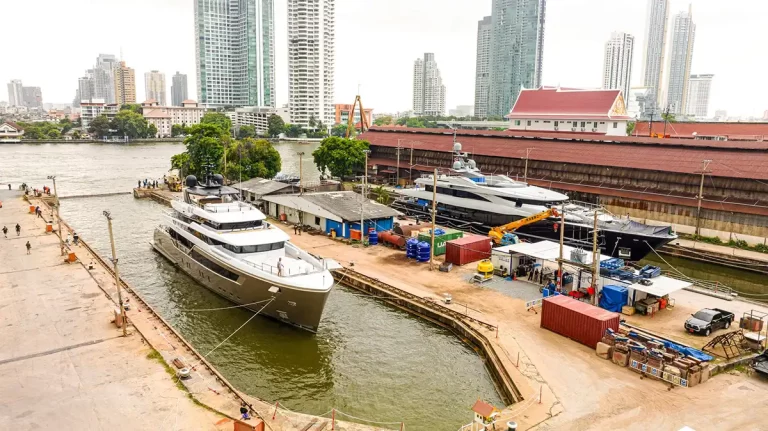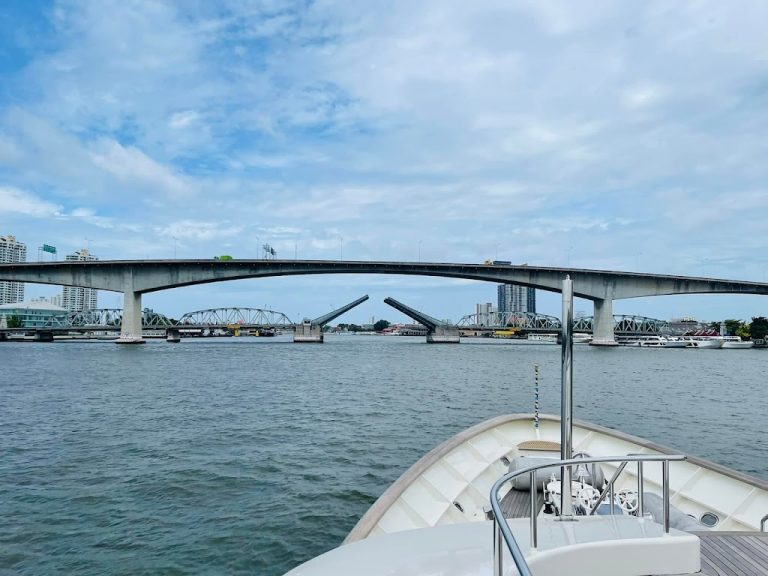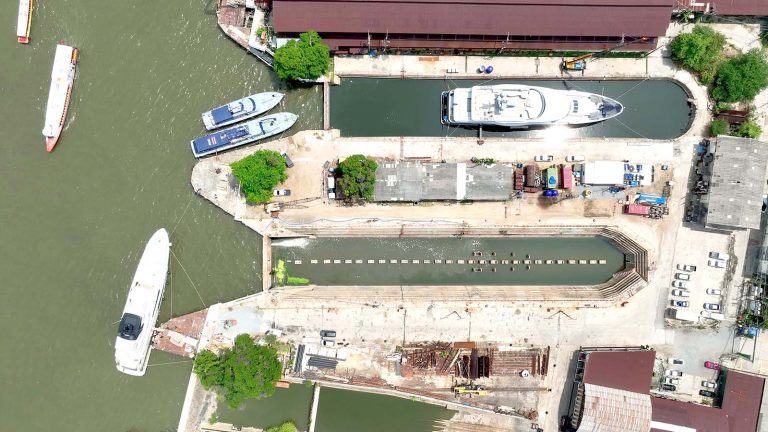How Often Does a Yacht Need a Refit?
A recent report by The Superyacht Group highlighted 70% of superyacht owners typically invest in a major vessel refit every 5 to 10 years. This statistic underscores the essential role that a well-planned refit plays in the maintenance, value, sustainability, performance, and overall appeal of luxury yachts.
Therefore a well-executed yacht refit can be completely transformative; extending the vessel lifespan, enhancing her performance, and rejuvenating a tired aesthetic.
Above all the process is typically comprehensive and can range from specific mechanical engineering requirements to complete structural overhauls and refurbishments. All refits are tailored to meet the client’s specific needs and desires.
Yacht Refit Management? The Benefits of a Shipyard
Minimising downtime and achieving the best possible results are crucial for any marine operation, and a professional refit plays a vital role in this process.
By entrusting your vessel to experienced professionals accordingly, you ensure that every aspect of the refit is handled with precision and expertise.
Dedicated Marine Workforce:
Professional yacht refit companies will employ a detail-oriented workforce, with in-depth knowledge of the intricacies and potential pitfalls of modern yacht modifications.
A refit will demand a variety of marine disciplines including engineering, plumbing, electrical, carpentry, joinery, decking, upholstery and beyond.
A seasoned management team with a network of skilled and reliable subcontractors is absolutely essential to ensure success.
Detailed Planning and Design:
Thorough planning and design are necessary prior to the project commencing. The devil is often in the detail and an expert team will work with you to define the scope of works and perform a thorough vessel survey, determining necessary improvements, repairs and enhancements.
Planning and discussion is essential to avert any misunderstandings and delays from the outset.
Procurement of Specialist Products and Genuine Parts:
Sourcing the best products and ensuring genuine parts and materials is always a best practice for maintaining the yacht’s integrity, performance and safety.
The shipyard will handle all procurement, and have established trade relationships with suppliers, ensuring not only high quality control, but also financial savings when compared to retail purchasing.

How Much Does it Cost to Refit a Yacht?
Understanding the cost of a superyacht refit will require the detailed assessment of numerous factors, which includes the scope of works required, the current vessel distance from the dry docks, the yacht size and age, the level of bespoke alterations planned, and the specifications of technology to be implemented.
For example: Do you require advanced technology such as hybrid propulsion, a food bio-digester, advanced emissions controls and teak decking alternatives?
Advanced technologies such as these, typically command a higher price, at the same time these technologies often lead to reduced energy / fuel consumption and operational costs, improved performance and enhanced sustainability, a potential long-term investment strategy.
Determine – What is Essential?
Effective cost management involves rationalising critical components of the refit from the outset. Prioritise necessary repairs and upgrades that impact the yacht’s safety and functionality first.
Distinguish between mandatory work and optional enhancements to focus your budget on the critical areas first.
Remember The Objectives of a Yacht Refit:

What Maintenance Does a Yacht Need? Typical Shipyard Services:
- Fuel services, including bunkering and polishing (carbon filtration to eliminate contaminants).
- Tank cleaning operations (fuel, freshwater, black and grey water and ballast tanks).
- Structural integrity and mechanical engineering, including main engines, hydraulics systems, propulsion and steering (propeller, shaft and rudders), exhaust systems and electrical.
- Plumbing and sewage systems (including black / grey descaling to ensure clear pipes)
- HVAC systems (including cleaning, disinfection, ozone-treatments and fire-risk removal).
- Freshwater recirculation services, including watermakers and desalination.
- Internal finishing, including any carpentry, joinery, upholstery, furnishing and lighting.
- External hull cleaning, antifoul, painting and brightwork, fibreglass repairs and teak decking.
Increase Your Budget – or Don’t
Refits can vary significantly in cost, depending on the extent of the work. It’s wise to decide whether you can increase your budget to accommodate additional works before the project begins, Setting a predefined limit can be tricky as contingency planning for unexpected expenses should be a part of your budget.

How Long Does a Yacht Refit Take?
The duration of a yacht refit all things considered, can widely vary; 3 months, 6 months, 9 and beyond is commonplace. Determined by vessel size, project complexity, modifications and services required, the efficiency of the shipyard, and any unforeseen challenges that may arise (plan with a contingency).
The 3 Steps to Yacht Refit Success:
Ensure You are Fully Aware of The Project Scope From The Outset –
In brief; the extent and nature of the refit work are significant factors in determining the overall timeline:
- Major vs. Minor Refits: Major refits, involving comprehensive structural changes, system upgrades, or complete interior redesigns, can take several months to over a year. By contrast, minor refits, such as cosmetic updates or system repairs, might only take a few weeks.
- Custom Work: Custom or bespoke projects, where specific designs or unique features are added, often require more time due to the intricacies involved in achieving the desired results.
- Technical Complexity: Upgrades to advanced systems, such as navigation technology or propulsion systems, can be time-consuming due to the complexity of installation and calibration.
Be Flexible –
Flexibility is crucial in managing refit timelines. Various factors can undoubtably cause delays, including:
- Supply Chain Disruptions: Lead times for specialty parts and materials can fluctuate, exacerbated by global supply chain issues, in turn impacting project schedules.
- Unforeseen Repairs: Hidden issues may arise once work begins, such as structural problems or mechanical failures that weren’t apparent during initial assessments.
- Regulatory and Compliance Checks: Ensuring that all work meets maritime regulations and standards can sometimes add time, especially if modifications require additional inspections or certifications.
Maintain Consistent Channels of Communication –
Another key point is to address challenges as they arise, ensuring a refit project remains on schedule:
- Coordination and Communication: Effective coordination between the yacht owner or captain, shipyard, and subcontractors is absolutely essential. Clear communication helps to promptly resolve issues and making decisions quicker ensures project momentum.
- Project Management: A dedicated project manager will ensure that tasks are executed according to the works plan, and any issues are dealt with swiftly. The importance of having a good project manager can not be understated.
- Regular Updates and Reviews: Schedule regular progress reviews to assess the current status, address any deviations from the plan, and adjust timelines as necessary. This proactive approach helps in managing expectations and making timely adjustments.
In short, the timeline for a yacht refit is often subject to adaption, that’s why careful planning, effective management, and flexibility is essential to navigate the process smoothly.
By understanding the complexities involved, and using a trusted shipyard with a good team undeniably ensures that your refit is completed efficiently and to the highest standards.

Conclusion
All things considered, a yacht refit is a pivotal investment in the longevity and enjoyment of your vessel.
Whether you’re looking to update its appearance, enhance its performance, or address critical repairs, a well-planned and executed refit can transform your yacht into a modern marvel.
By entrusting the process to skilled professionals, managing costs and timelines effectively, and understanding the need for regular updates, you can ensure that your yacht remains in top condition and retains its value for years to come.
For expert guidance and comprehensive management of your yacht refit project, partner with a professional service provider.
At Clearvac Engineering Asia, we specialise in delivering high-quality superyacht refit solutions from our shipyard in Bangkok situated on the Chao Phraya river, we ensure a smooth and successful project from start to finish so your pride and joy is yacht show ready.
Contact us today to learn more about how we can help you give your yacht a new lease on life.

Yacht Refit News and Resources:

The Best Yacht Refit Companies in The World
Discover the world’s leading Refit Shipyards, from the United States to the Far East

The Best Global Superyacht BoatShows In 2024
Our guide to all the superyacht shows, event and trade shows around the world throughout 2024!




